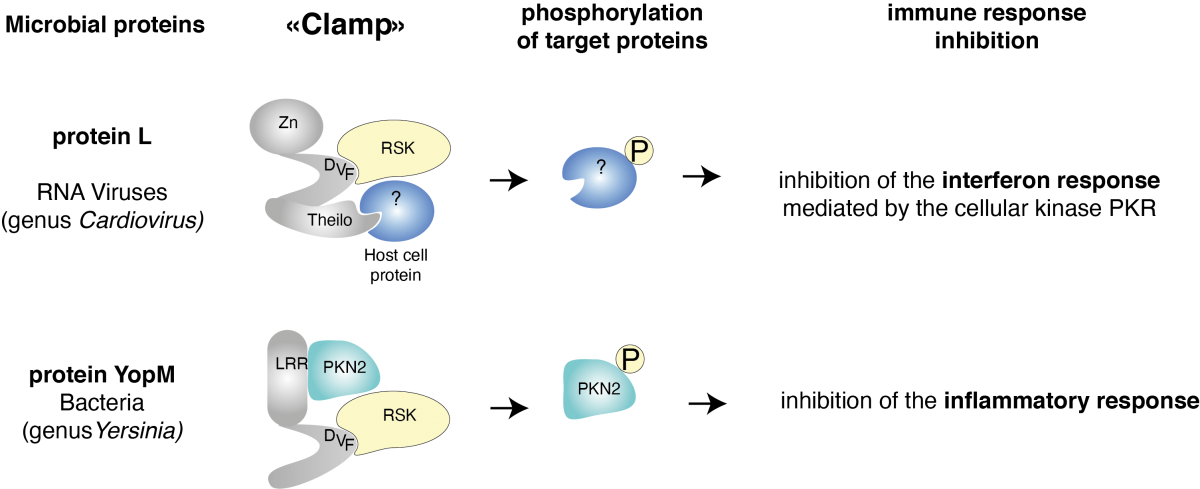

31/01/2022
The molecular virology (VIRO) team of Thomas Michiels published, in the prestigious journal PNAS, a striking observation originally made by Frédéric Sorgeloos and Michael Peeters. Unrelated microbes, including some RNA viruses, DNA viruses and bacteria produce proteins, which hijack a family of cellular enzymes named "RSKs" to their own benefit. Remarkably, these pathogens evolved in a convergent fashion to hijack the cellular enzymes through the very same mechanism.
This work not only unravels a novel mechanism involved in pathogenesis but also paves the way to the identification of additional pathogens, which make use of the same strategy. This work also suggests novel therapeutic approaches to dampen the virulence of such microbes.
The "model of the clamp" proposed in this article proposes that proteins produced by various microbes recruit and force the contact between a cellular enzyme whose activity is to phosphorylate proteins and a cellular substrate for this enzyme. Once phosphorylated, the substrate would act to inhibit the immune response of the host and to promote the infection.
 |
|
Model of the clamp whereby proteins produced by some microbes (viruses and bacteria) recruit host cell enzymes of the RSK family as well as a cellular substrate for these enzymes. Once phosphorylated by RSK, the modified substrate can act to dampen the immune response. |
Article describing ths research
Fundings of the research
This study has been supported by EOS (ID 30981113), IAP (IAP-P7/45), FNRS ([PDR] T.0185.14, [CDR] J.0143.18F) and Fonds Maurange.